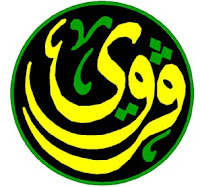09 August 2007
Organization works to increase awareness of Islamic experience in America
By Jeffrey Thomas
USINFO Staff writer
Washington -- Some years ago, Amir Muhammad began researching his family’s roots without any thought that it might lead him to America’s little-known Islamic heritage. Until then, he assumed that most American Muslims arrived in the 20th century, and he was unaware of any Islamic connection in his own family prior to his personal acceptance of Islam 35 years ago.
But Muhammad discovered he does have Muslim ancestors, as do many African Americans and Native Americans, and that the story of Islam in America reaches back much further than most people imagine.
In 1996, he established the nonprofit organization Collections & Stories of American Muslims (CSAM), of which he is president and curator. His goal is to uncover and preserve America’s Islamic heritage and to create a greater awareness of the Islamic experience in America.
CSAM exhibitions have been displayed at universities, public libraries and community centers in the United States and abroad, including the Smithsonian Institution’s Anacostia Museum and Center for African American History and Culture, located in Washington. Muhammad is seeking a building to house his collection.
Muhammad begins his account of America’s Islamic heritage with Moors fleeing the Spanish Inquisition. One of them was Estevanico, a Moor born in North Africa, who accompanied Spanish explorers in 1527 to what would become the Southwestern United States.
Slavery enters the story of Islam in America with the early European settlement. One of the myths Muhammad seeks to dispel is that enslaved Africans brought by the settlers had no organized religion and could not read or write.
He cites the story of Ayuba (Job) Suleiman Diallo, who was captured in 1730 in The Gambia and brought to Annapolis, Maryland, where he was sold into slavery. Diallo wrote a letter in Arabic to his father, according to Muhammad. The letter came to the attention of James Oglethorpe, the founder of the U.S. state Georgia, who helped buy Diallo’s freedom. Oglethorpe sent him to London and then back to his homeland to work for the Royal African Company of London. While in London, Diallo wrote down in Arabic three copies of the Quran from memory.
The CSAM exhibition includes four Quranic suras written in Arabic by a man named Charno in 1768, petitions written in Arabic by South Carolina Muslims seeking their freedom in 1753 and 1790, and photos of a diary in Arabic kept by a man named Ben Ali around 1829. Sources from the 17th and 18th centuries often refer to African Americans as Muslims, or as bearing Muslim names, or as practicing the Islamic faith. Muhammad notes that many early American Muslims had engraved on their tombstones a hand with one finger pointing up as the Islamic symbol of God’s oneness, and their tombstones were facing toward Makkah.
In every war the United States has fought, Muslims have played a role. Two Muslims who fought with distinction in the American Revolutionary War, Peter Salem and Salem Poor, have been honored on U.S. postage stamps.
Muhammad also has found records of 292 U.S. Civil War veterans with Islamic names who fought for the Union and more than 5,200 American Muslims who served in World War I.
By the later 19th century and early 20th century, Muslim immigrants were arriving in America from Yemen, Albania, Turkey, Syria, Lebanon, Palestine, Jordan, India and Poland. In 1899, Syrian immigrants in Ross, North Dakota, established what may have been the first Muslim place of worship in America. But the “first effective mosque in North America” was built by Albanian Muslims in Biddeford, Maine, in 1915, according to Muhammad.
He says that as a Muslim, he has found the stories that he uncovered inspiring. American Muslims from various backgrounds “kept their faith no matter how bad things were,” he said during a presentation at the State Department August 9.
“Muslims and Islam have been a part of the American fabric for centuries,” he said. “It is part of the many threads of culture, colors, religions and lifestyles that make up the American pluralistic quilt.”
Muhammad has written several books, including America’s Masajid and Islamic Centers: A Pictorial Account, Muslims in America: 7 Centuries of History, People of Color in Pre-Islamic and Islamic History and Contributions of Muslims to the World.
More information is available on the CSAM Web site.
skip to main |
skip to sidebar

Belvilla holiday homes – Last-Minute: discounts up to 30% on 100's of homes all over Europe(click here to book online!)


ads
ads
Moosejaw offers mid to high-end mountain apparel and outdoor equipment
more online Boutique - Ladies & Men
TRANSLATE!
Get your answers!
Gaiam Presents
Hotel Planner
Eurail Passes (North America #1 Seller)
Holiday homes - Europe
European Phonecards
moblie guide
GROUP TRAVELS
Travel bookings
Aussie Share Accomodation Service
SEARCH BOX
HotelClub
Affiliate Marketing - Affiliatebot
| AffiliateBOT - Make Money Make $$$ promoting top offers from AffiliateBOT today! |
ads
Amazon.com
INTERNATIONAL PAID SURVEYS
Paid Survey
 Get paid for your opinions! Click on the banner above to join Planet Pulse. Its totally free to sign up, and you can earn UNLIMITED. Find out more by visiting PLANET PULSE. |





















